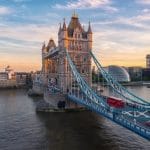- Lloyds continues to struggle in the markets, trading within the narrow price range of between 45p and 48p for the past month.
Lloyds continues to struggle in the markets, trading within the narrow price range of between 45p and 48p for the past month. The horizontal trend has been caused by a number of reasons which we will discuss throughout this article.
Lloyds Latest News
According to recent reports, Lloyds, the largest domestic bank in the UK, has hired Ron van Kemenade, ING’s technology chief, to run its operations as group chief operating officer. Van Kemenade’s role will involve helping CEO Charlie Nunn implement his strategy to digitize the bank and increase fee income in areas including wealth management. He will take over from interim COO David Oldfield, who plans to leave next year, subject to regulatory approval. ING has stated that it has begun the process of identifying a successor to van Kemenade as chief technology officer.
Lloyds has also warned customers about an increase in online shopping scams, with the number of such scams rising by 20% in December of last year. The bank found that the average amount lost by victims was £427 ($568), but those aged 55 to 64 lost an average of £1,000. Most scams start on social media platforms such as Instagram or Facebook Marketplace, with victims lured in by the promise of discounted or hard-to-find goods, particularly during busy shopping periods like Christmas. Lloyds advises customers to use debit or credit cards when shopping online and to only buy from trusted retailers, and to be wary of low prices and great deals that may be hiding scams.
Lloyds Fundamental analysis
Lloyds is a large UK bank that has seen its share price decline 7% in 2022. The bank is currently trading at a low valuation, with a price-to-earnings ratio of 6.3 and a dividend yield of 6%. Lloyds is expected to benefit from higher interest rates, which have the potential to increase profits by widening the spread between borrowing and lending rates. The bank posted 15% growth in underlying net interest income in the last quarter, due in part to higher interest rates.
In addition to the potential boost from higher interest rates, Lloyds could also benefit from government plans to shake up regulations and potentially allow banks to combine their retail and investment banking operations. This could provide an opportunity for the bank to boost profits and shareholder returns through acquisition activity.
However, Lloyds also faces significant risks. The bank is facing a prolonged period of weak profits growth, which could affect its ability to increase dividends in the future. Additionally, the UK’s economic downturn has led to an increased risk of loan impairments, as evidenced by the bank setting aside an extra £668m to cover bad loans in the third quarter, leading to a 17% year-on-year decline in underlying profits. Structural problems in the UK economy, including low productivity growth, high public debt, and labour shortages, are also expected to persist, and Lloyds faces increased competition from challenger banks.
What Next for Lloyds?
In conclusion, Lloyds is a large UK bank that offers attractive value for investors, with a low valuation and a decent dividend yield. The bank is expected to benefit from higher interest rates, which have the potential to increase profits by widening the spread between borrowing and lending rates. Additionally, government plans to shake up regulations could provide an opportunity for the bank to boost profits and shareholder returns through acquisition activity.
However, there are also significant risks to consider when it comes to investing in Lloyds. The bank is facing a prolonged period of weak profits growth, which could affect its ability to increase dividends in the future. Additionally, the UK’s economic downturn has led to an increased risk of loan impairments, which could potentially impact the bank’s earnings and share price. Furthermore, structural problems in the UK economy, including low productivity growth, high public debt, and labour shortages, are expected to persist and could impact the bank’s performance. Lloyds also faces increased competition from challenger banks.
Given these risks and uncertainties, it is likely that we might continue to see Lloyds trading in a sideways market for the next few trading sessions. As seen from its price action of the past three weeks, where it has traded within the narrow price range of between 45p and 48p during that time. However, a move outside these price ranges will invalidate my horizontal trend analysis.
Lloyds Daily Chart






